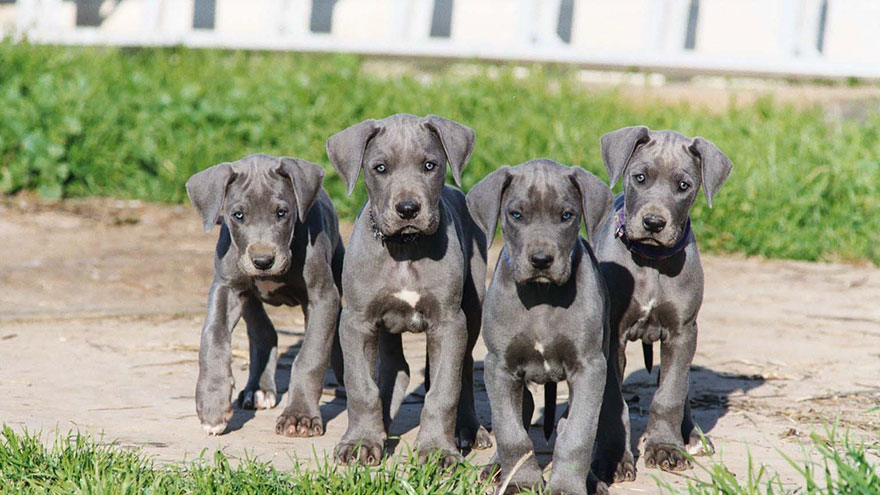Great Dane Health Guide
The Great Dane is not a breed that will live an exceptionally long life, with 10 years being about the average. However, some Great Danes have lived to be 12 or 13 years old.
One of the keys to getting a good start with your pet is to purchase from a reputable breeder, someone that uses good breeding parents and is well aware of the health problems that can affect purebred dogs.
Health Problems in the Great Dane
As with some other unique animals, poor breeding practices have produced some Great Danes that were not fit for the family. The problems were more than many people could handle. You definitely want to ask about hip dysplasia, a joint disease related to arthritis that can often be detected early and eliminated as a long-term problem.
A good breeder should be able to provide you with OFA-certified puppies that are free from this disease. Hip dysplasia is a medical condition that has been a problem for dozens of purebred dogs, especially larger breeds.
Medications such as Rimadyl and Deramaxx can be helpful for pain and inflammation or your veterinarian might recommend treatment. Just remember that you always want to consult with your veterinarian when your Great Dane exhibits a health problem. Hip surgery is a major step in correcting advanced conditions of hip dysplasia but the dog must meet certain health, age, and weight requirements.
Great Danes and other large dogs can also be prone to bloat or distortion, in which the stomach twists and blocks passage of food through the system. This can also cut off the blood supply to other parts of the body, which is often related to large dogs that gulp a larger amount of food at one time rather than eating smaller portions several times during the day.

It would be best to establish this staggered eating pattern for your Great Dane to avoid this problem. We recommend avoiding vigorous exercise immediately after mealtime as well. Should you suspect bloat or other internal disorders, contact your veterinarian immediately.
Great Danes are also considered a risk for the condition commonly called “wobblers.” This occurs when there is unusual pressure on the spinal cord at the neck and the dog walks with a stumbling gait and seems unsteady. Experienced owners and breeders say the result is from a combination of inherited traits and effects of inadequate nutrition. Other conditions to be aware of and to watch for include hypothyroidism and heart problems such as cardiomyopathy. You should ask about these conditions when you visit breeders and when you take your Great Dane to the veterinarian.
To get the best start for your and your Great Dane, it is best to visit several breeders and be prepared with questions about health and general care of your pet. A top breeder will be open to these questions and should be able to clear up any doubts and misinformation you may have from your reading and research on the Great Dane.
It is also important to talk with the breeder about the food you will be giving your pet on a daily basis. Ask the breeder what types of food the puppies get at his facilities. This may give you just what you need for the growth period of your young dog. Many experts will tell you that it is best to avoid the lower-quality commercial foods because of the high grain contents (wheat, corn, soy).
Some dogs are highly allergic to these grains and develop serious health problems from regular feedings of this low cost food. A diet of lean meats, vegetables and the right amount of protein is a great place to start.
Read More About Great Dane
- Great Dane Breed Information
- Great Dane : 10 Most Common Questions
- Great Dane Training Guide
- Owning a Great Dane : Breeder Recommendations

